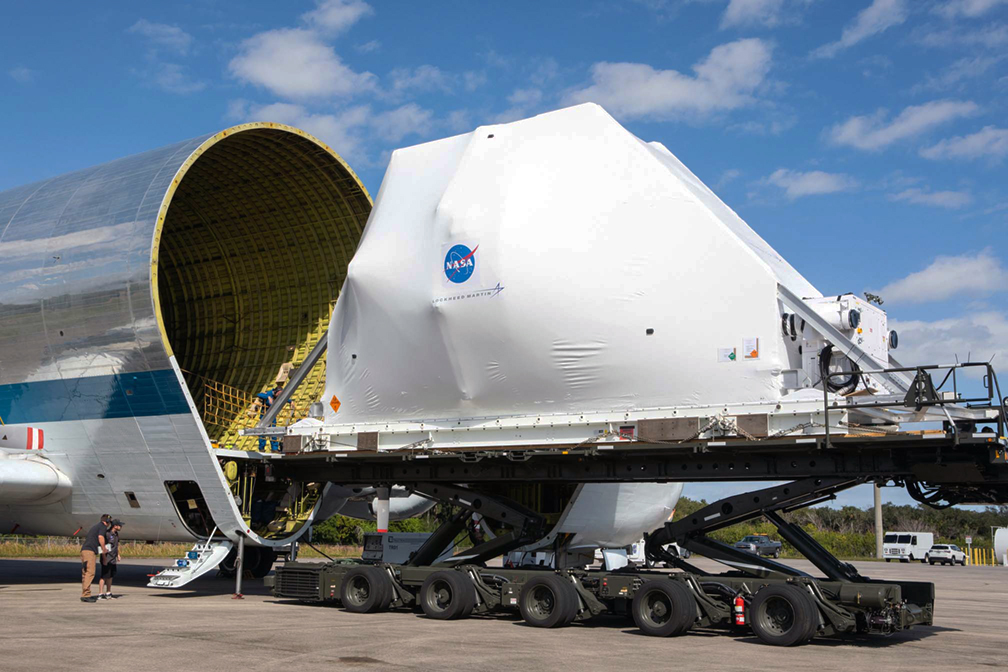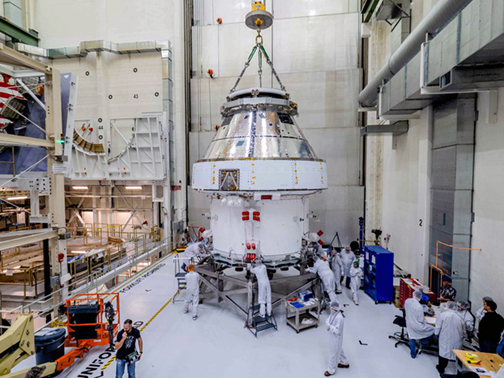
The Orion spaceship took off on board a Super Guppy aircraft from the Kennedy Space Center on Sunday, November 24 — the destination was the world’s largest thermal vacuum chamber, owned by NASA.

A team of engineers and technicians from Airbus, the European Space Agency (ESA), Lockheed Martin and NASA are ready to put the spacecraft through simulations of extreme space conditions. ESA's European Service Module will provide propulsion, power, air and water for the astronauts, as well as thermal control of the entire spacecraft. The first launch, without astronauts, is planned for the end of 2020. Artemis I will travel once around the Moon and back to Earth. Airbus in Bremen is already building the second Orion Service Module, with which astronauts will fly to the Moon and back to Earth for the first time (2022 / 2023).
The tests will be conducted in two phases in the world's largest vacuum chamber at NASA's Glenn Test Center in Plum Brook, Ohio. First there will be a 63-day thermal test. Orion's electrical systems will be switched on and operated under vacuum and in temperatures which simulate the environmental conditions in space.
During this phase, the spacecraft will be exposed to extreme temperatures from about minus 115 to plus 75 degrees Celsius to reproduce the conditions the spacecraft will be exposed to, when in direct sunlight and in shadow in space.
The second phase is an electromagnetic compatibility test, which lasts about 14 days. Each electronic component emits a kind of electromagnetic field that can affect the performance of other nearby electronics. These tests ensure that the spacecraft's electronics function properly while operating.

After successful testing, Orion will return to NASA's Kennedy Space Center, where further tests and preparations for integration with the new Space Launch System (SLS) rocket will start before the launch of Artemis I at the end of 2020.
Matthias Gronowski, Chief Engineer for the European Service Module that Airbus is building for NASA on behalf of ESA, said that with the tests, the company will show that the spacecraft's systems work as planned and at the same time ensure safe operation for the astronauts on future missions — both on the ground and on board. This is a very important milestone for the journey to the Moon. The international team has been working toward this goal for three years now, and in recent months Airbus has mechanically and electrically connected the Crew Module (astronaut capsule) and the European Service Module at Kennedy Space Center.

